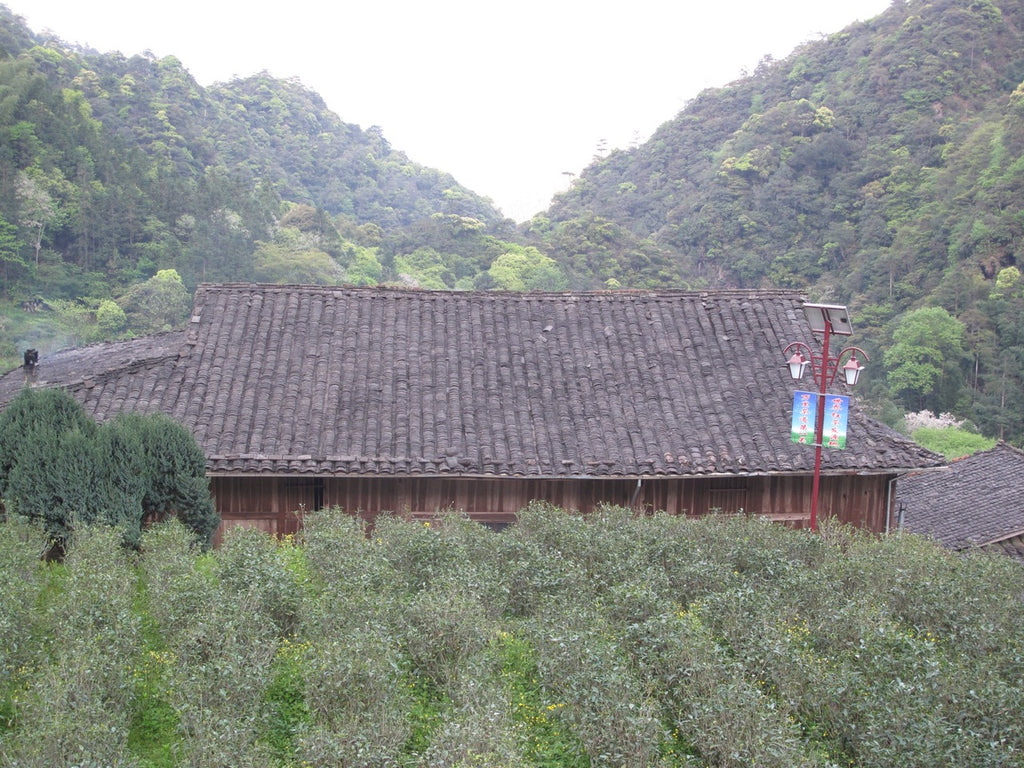The Smoky Allure of Lapsang Souchong

With smoky notes of peppered bacon, baked fruit and pine sap, Lapsang Souchong tea isn't shy about announcing its presence. This is a tea you smell across the room before your first sip. Some drinkers can't stand it; others can't get enough. The distinctive brew from Fujian Province is also an essential component of Russian Caravan blends, and is a traditional element in tea-smoked duck and fragrant tea eggs.
History suggests lapsang souchong is the world's first black tea, and no matter how you feel about this smoldering infusion, it has played a critical role in the global tea trade from the 17th century to the present. How is lapsang souchong made, and where does that smoky taste come from?

The history of lapsang souchong tea
As with many teas, the legend of lapsang souchong takes a poetic approach. In one telling, a company of traveling soldiers decided to make camp at a tea farm overnight, creating mattresses out of bags of freshly picked leaves destined for green tea. The next day, the tea farmers awoke in horror to find their precious leaves squashed by the soldiers, oxidized and smelling of unwashed infantry. To dry the tea in time for the local market, the farmers baked the leaves over fires made from local red pine wood; the sap in the logs imbued the tea with a powerful smoky aroma. The farmers thought it tasted rotten, but foreign buyers at the market fell in love with its bold flavor, and voila, a lucrative new tea category was born.
Here's what we can say on firmer historical footing: Records of lapsang souchong ("small leaf smoky variety" in the Fuzhou dialect) date back to 17th century Qing Dynasty China in the Wuyi region of Fujian—the mountainous source of famous rock tea or yancha oolongs like Tieluohan. Partially oxidized oolong teas grew in popularity during this period, and production of a more heavily oxidized black tea involves many of the same steps.

Wuyi's misty climate, mineral-rich soil, and high elevation are ideal conditions for potent, slow-growing tea. But cloudy skies and humid air can interfere with tea processing, as the leaves may require an additional source of heat to drive out internal moisture. One solution is to light a fire—the legend got that part right—and with abundant pine trees surrounding lapsang's home of Tongmu Guan, farmers had a ready source of fuel. This pine wood is what lends lapsang souchong its smoky allure, and when used with care, it can enhance a black tea's innate fruity and mineral character rather than overpower it.
The legend is also correct about the response of foreigners to lapsang souchong tea. Dutch and English traders grew fascinated with it, as the oxidized leaves fared better on long ocean voyages to Europe than more delicate green varieties, whose higher moisture content invited mold and mildew. Lapsang souchong's distinctive flavor took well to Western tea brewing methods, and its longer shelf life inspired demand for other black teas. By 1760, the British East India Company reported shipping 62,900 pounds of lapsang souchong to the Annual Register. Black teas aren't very popular in China, but have become the default style of tea served in the West, in part to lapsang souchong's influence.

How lapsang souchong tea is made
Traditional lapsang souchong tea—called Zheng Shan Xiao Zhong in Mandarin—is made in a multi-story smokehouse with slotted bamboo floors. Smoke rises from a fire pit up through the withering, oxidation, and drying rooms, slowly imbuing the leaves with resinous pine wood flavor. We were lucky to witness this process in Tongmu firsthand during a 2017 trip to Wuyi—the area lies inside a protected national forest, and foreigners are rarely allowed access.
Other than the integration of smoke, lapsang souchong is processed like many black teas. First the leaves wither on a raised bed until they've lost enough moisture to become pliant. Then they're rolled to break down cell walls, redistribute juices in the leaf, and kick off oxidation. After a resting period of several hours, the leaves are pan-fired in a wok to halt further oxidation, then dried in ovens.

The resulting tea is smoky, yes, but also rich and fruity. Quality lots boast a mineral backbone characteristic of other Wuyi teas, and are low in bitterness and astringency.
The taste of traditional vs. contemporary lapsang souchong tea
Contrary to popular belief, traditional lapsang souchong isn't intensely smoky. Pine smoking should enhance the tea's innate characteristics, not obliterate them.

We're proud to offer a lot of genuine Tongmu Reserve Lapsang Souchong from the small family farm shown in these photos. These friends make a beautifully balanced tea in the traditional style. Here, a subtle smokiness complements deep fruit and floral notes, rather than covering the essence of the tea. Notes of cranberry and a pleasant resinous aroma grow with each dynamic infusion.
Drinkers who lean toward a more smoke-forward tea may prefer our standard Lapsang Souchong, which follows the same processing as our Tongmu Reserve, but with a heavier and deliberate application of pine wood smoke—and at a more accessible price. We source lots of this tea from a few producers in Fujian that specialize in this more robust style to meet the tastes of the contemporary market. In the West, lapsang souchong is often referred to as "that smoky tea." Our current lot lives up to this reputation with a blackstrap molasses brio that highlights the mineral intensity of Wuyi leaf. It's also ideal for culinary uses like infusing into spirits, flavoring marinades and enriching braising liquids.
However you prefer your lapsang, it's worth taking a closer look at this historic tea. We love to brew it in a gaiwan filled about one-quarter way with leaves, steeped with boiling water for a series of short infusions, starting with one minute. Like the trunks of Tongmu's red pine trees, lapsang souchong has layers. Take the time to peel them back and appreciate what each one has to offer.
Try our Lapsang Souchong and Tongmu Reserve today!
